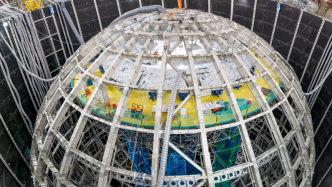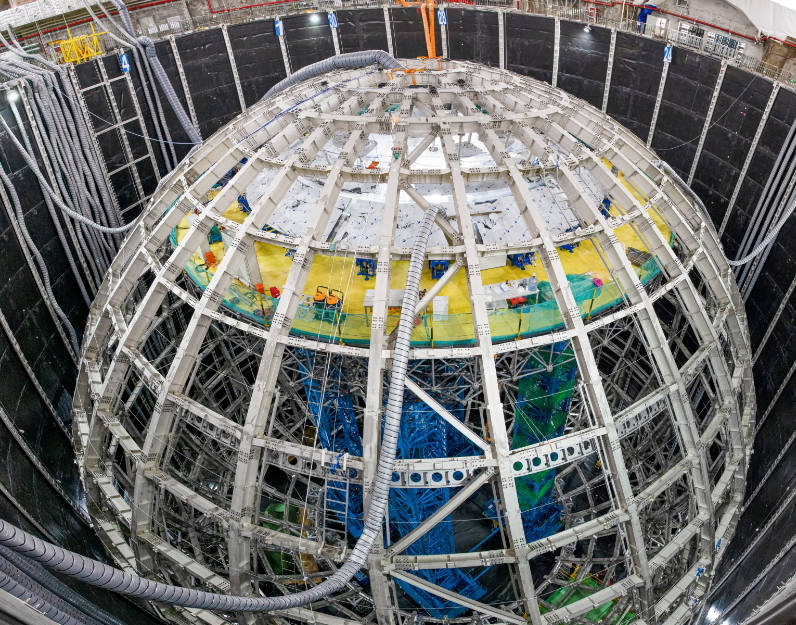
"The development of my country's large scientific installations has reached a turning point - the number is already quite large, but it is facing the problem of quality improvement." During the National People's Congress and academician of the Chinese Academy of Sciences, Wang Yifang told the "China Science Daily".
In recent years, the Party Central Committee and the State Council have attached great importance to the construction of large scientific devices, and regard them as an important support for improving the level of basic research and applied research in my country and promoting international scientific and technological cooperation in related fields. The construction of large scientific installations in my country has entered an unprecedented period of rapid development. At present, 57 facilities have been planned and constructed. According to the "14th Five-Year Plan", about 20 new facilities are planned to be built.
How to give full play to the role of large scientific installations in promoting institutionalized basic research has become a hot topic among representatives from the field of large scientific installations.

The Jiangmen Neutrino Experimental Station under construction. Zhou Huadongtu
Organize users: set up semi-permanent research units around large scientific installations
Another identity of Wang Yifang is the chief scientist of Daya Bay Neutrino Experiment and Jiangmen Neutrino Experiment.
"Large scientific installations naturally have the characteristics of institutionalized scientific research." Wang Yifang said that the Daya Bay neutrino experiment and the Jiangmen neutrino experiment adopt an organized model from device design, construction, operation to data processing and scientific research. There are not only various management committees such as international cooperation groups, executive committees, and advisory committees, but also different systems and subsystems. This pyramid-shaped management system is in charge of special personnel.
In these large scientific installations, specific research topics are generally proposed by scientists. "Some topics are proposed by many people, and some topics are not proposed by people, so we will maintain some balance in management to ensure that all topics are covered by people, and at the same time ensure that not everyone is concentrated on one topic." Wang Yifang said.
This approach provides a reference for other large scientific installations.
Wang Yifang told the "China Science Daily" that in China, the time of many large scientific devices needs to be applied by scientific researchers or teams, and the users come from different universities and research institutes. After the construction and operation unit receives the machine time application from the scientific researcher, it will organize expert review, and those who pass the review can get the machine time of the installation.
In order to better organize scientific research users, he suggested that according to the characteristics of large scientific installations, build several unincorporated, semi-permanent research units, and then these research units organize relevant domestic experts to form a relatively fixed large team in some important directions , long-term research, and carry out major research.
"For example, around synchrotron radiation sources, research units can be organized in nano, materials, biology, environment, etc., focusing on major issues and solving problems." Wang Yifang said.
Build a good platform: focus on main responsibilities and main business, strengthen observation methods and experimental methods
"Institutionalized basic scientific research is organized basic scientific research, and 'organization' means 'setting goals and dividing work'." Sun Zhijia, member of the National Committee of the Chinese People's Political Consultative Conference and head of the China Spallation Neutron Source Detector and Electronics Team explain.
The China Spallation Neutron Source, where Sun Zhijia works, is one of the major scientific installations under construction during my country's "Eleventh Five-Year Plan". On December 26, 2022, the feasibility study report on the Phase II project of the China Spallation Neutron Source was approved by the National Development and Reform Commission.
In terms of promoting institutionalized basic scientific research with large scientific installations, Sun Zhijia considered how to give full play to his own strengths and support scientific research with powerful observation methods and experimental methods.
"Promoting institutionalized basic scientific research requires unremitting exploration of large scientific installations, the adoption of new technologies and new methods, and improvement of observation accuracy; the talent team, research and development platforms and professional equipment of large scientific installations are required to maintain stability and continuous iteration." Sun Zhijia said. .
He believes that in institutionalized basic scientific research, it is necessary to do a good job in the main responsibility and the main business, give full play to their respective strengths, and form a joint force. "It's like a wooden barrel is composed of ten wooden boards, and each person has a wooden board in his hand. The institutionalized basic scientific research is to put the wooden boards in everyone's hands together. Everyone makes their own board as long as possible. And when the wooden barrels are put together, there is no water leakage between the planks.”
As for how to make the China Spallation Neutron Source play a better role in supporting basic research, Sun Zhijia suggested that the lineup of large scientific devices in the Guangdong-Hong Kong-Macao Greater Bay Area should be further expanded, and the construction of the "Guangdong-Hong Kong-Macao Greater Bay Area Light Source" be accelerated. The combination of spallation neutron source and synchrotron radiation light source supports and cooperates with each other to give full play to the cluster effect of large scientific devices, create a multi-disciplinary cutting-edge cross-application platform, support the technological iteration of high-tech enterprises, and promote the high-end manufacturing industry in the Guangdong-Hong Kong-Macao Greater Bay Area develop.
Talent Relay: Vigorously cultivate young talents and scientifically evaluate strategic scientists
For Zhang Xinmin, member of the National Committee of the Chinese People's Political Consultative Conference and chief scientist of Ali's original gravitational wave detection experiment project, the key to whether large scientific installations can drive institutionalized basic scientific research depends on whether talents are sustainable.
In the past seven years, Zhang Xinmin, as the chief scientist and spokesperson of the international cooperation group, has been leading the team to build my country's first large-scale original gravitational wave detection device at an altitude of 5,250 meters in the Ngari area of Tibet, my country.
"Basic research based on large scientific devices has a significant feature, that is, long cycle, high cost, and high social attention. The construction and operation of the device will last for a long time, and scientists from many units need to coordinate with each other." Zhang Xinmin believes that this The characteristics determine the importance of "people" to the installation.
At the National Two Sessions last year, Zhang Xinmin called for greater efforts to train young talents engaged in large-scale scientific device research, not to use the number of papers as the main criterion in the talent selection process, and to give certain preference to young talents engaged in large-scale scientific device research.
This year, he is still paying attention to the issue of talent sustainability in large scientific installations. "The emergence of a big achievement may require a relay from generation to generation. When young people see that their predecessors have spent decades and have not been recognized for a lifetime, they feel 'don't do those things', and eventually they will form a vicious Cycle, no one will take over." Zhang Xinmin said.
At the same time, Zhang Xinmin believes that if large scientific installations want to drive institutionalized basic scientific research, they should rely on a group of strategic scientists. "Strategic scientists should have profound scientific literacy, grand structure, forward-looking vision, timely attention to major scientific issues facing them, pay attention to the development trend of disciplines, and explore the trend of interdisciplinary integration. ' is directly related to how much."
He suggested that the traditional definition of strategic scientists should be broken, heroes should not be judged by "hats", and strategic scientists in large scientific installations should play a greater role in promoting institutionalized basic scientific research.
(Original title "How large scientific installations promote institutionalized basic scientific research")

Beneficial data, Regards! casino en ligne You reported that well! casino en ligne You said it adequately.. casino en ligne Regards! A good amount of stuff! casino en ligne Incredible all kinds of beneficial material. casino en ligne Thanks a lot, Loads of information! casino en ligne Really a good deal of beneficial facts. casino en ligne Superb postings. Appreciate it! casino en ligne Nicely put, Thank you. casino en ligne Thanks! Quite a lot of facts. casino en ligne